Climbing Kilimanjaro is a bucket-list adventure for many trekkers. The Marangu Route 8 Day Program offers an excellent opportunity to tackle Africa’s highest peak. Participants will embark on a gradual ascent, allowing their bodies to acclimatize as they traverse diverse ecosystems. From lush rainforests to barren alpine landscapes, the trek promises breathtaking vistas and camaraderie with fellow adventurers. While the summit attempt presents a significant challenge, the sense of accomplishment upon reaching Uhuru Peak makes the journey well worth the effort. Those who persevere will return home with unforgettable memories and a deeper appreciation for the power of the natural world.
Good To Know
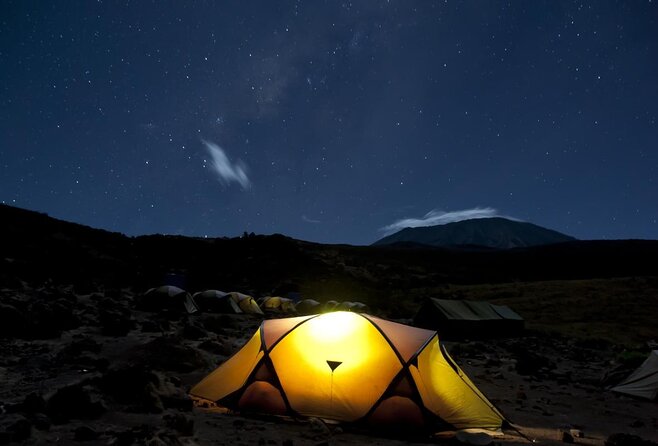
- The Marangu Route is an 8-day program for climbing Kilimanjaro, starting at Marangu Gate and reaching the summit at Uhuru Peak.
- Proper preparation, including endurance training, gear selection, and acclimatization, is crucial for a successful and safe climb.
- The trek follows a gradual ascent through various ecosystems, including rainforests, moorlands, and the Saddle between Mawenzi and Kibo peaks.
- Trekkers will stay at designated huts along the route, with the final ascent to the summit attempted from Kibo Hut.
- Descending the mountain requires careful pacing and technique to avoid strain on the body, typically taking two days to retrace the route.
Preparing for the Climb

How can travelers best prepare for their Kilimanjaro climb via the Marangu Route? Proper preparation is key to a successful summit.
Start by building endurance through regular cardiovascular exercise and strength training. Gradually increase the duration and intensity of your workouts to mimic the physical demands of the climb.
It’s also crucial to research the route, pack appropriate gear, and ensure you’re medically fit. Stay hydrated, pace yourself, and listen to your body during the ascent.
With the right mindset and preparation, travelers can conquer Kilimanjaro’s challenges and enjoy a rewarding experience.
You can also read our reviews of more tours and experiences in Arusha.
Arrival and Acclimatization
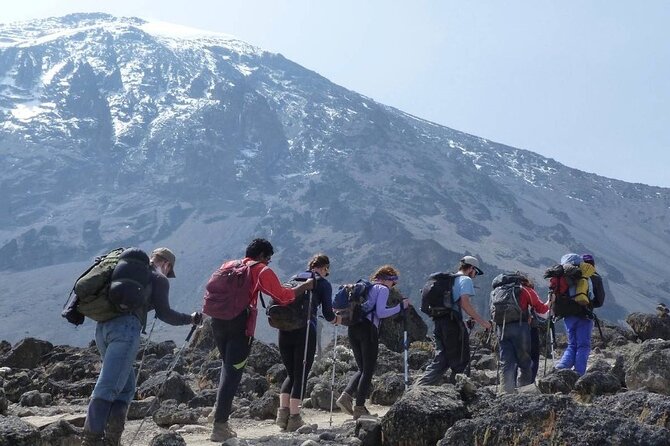
Travelers arrive at the Kilimanjaro International Airport, where they’re met by the tour operator’s representative and transferred to the Springlands Hotel in Moshi.
At the hotel, they’ll have the opportunity to prepare their climbing gear and meet the rest of the group.
The next day, the team will undergo a briefing session, where the guide will explain the itinerary, safety protocols, and necessary gear. This is also the time to ensure everyone is ready for the challenge ahead.
The group will then have the rest of the day to explore Moshi or relax at the hotel before the trek begins the following morning.
Day 1: Hiking to Mandara Hut
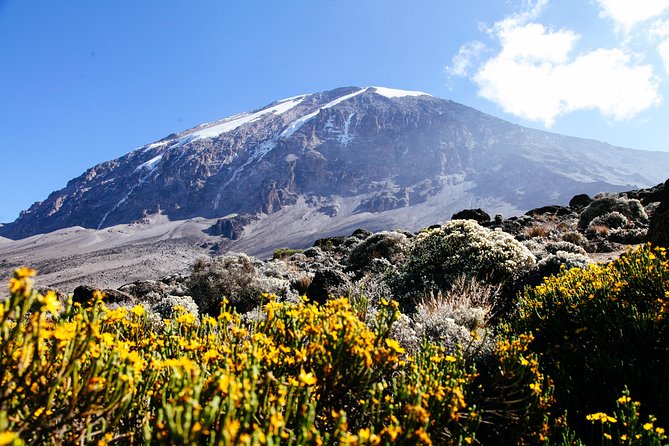
The Kilimanjaro climb begins from the Marangu Gate, located at an elevation of 1,870 meters (6,135 feet). Hikers will trek through lush, verdant rainforest, spotting wildlife like monkeys and diverse birdlife along the way.
The hike to Mandara Hut (2,720 m/8,920 ft) takes approximately 5-6 hours to complete. Key highlights include:
- Crossing the Maundi Crater, a striking volcanic feature along the route.
- Arriving at Mandara Hut, a scenic camp surrounded by giant heather and groundsel.
- Enjoying panoramic views of the Kenyan plains and Mount Mawenzi, one of Kilimanjaro’s iconic peaks.
The first day sets the tone for the challenging, yet rewarding Kilimanjaro adventure.
Day 2: Ascending to Horombo Hut
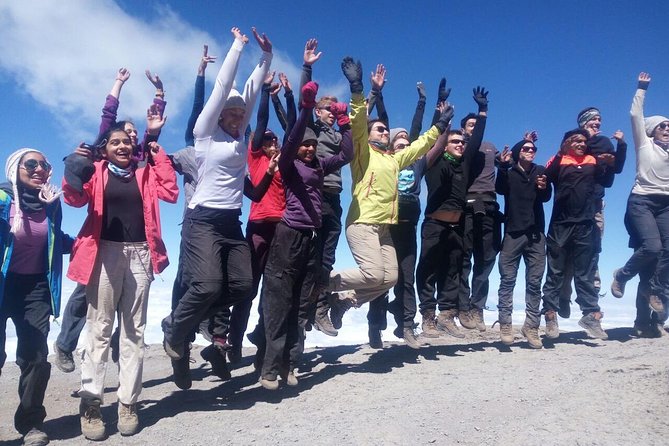
Typically, the trek from Mandara Hut to Horombo Hut takes about 6-8 hours to complete. Climbers will continue ascending through the moorland ecosystem, passing by the Maundi Crater.
The trail becomes steeper as it winds through the heather and rocky terrain. Hikers will take breaks to rest and hydrate.
Upon reaching Horombo Hut, located at an elevation of 12,205 feet, climbers will have time to explore the camp and acclimate to the higher altitude.
Dinner will be served in the dining hall, and climbers will retire early to prepare for the next day’s challenging trek to Kibo Hut.
Day 3: Trekking to Kibo Hut
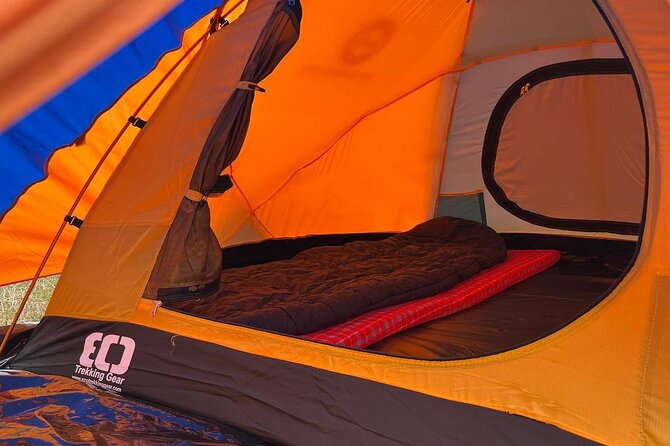
After a restful night at Horombo Hut, climbers embark on the challenging trek to Kibo Hut, which sits at an elevation of 15,430 feet.
The ascent is steep and strenuous, with the path winding through the desolate alpine desert.
Along the way, climbers will:
- Encounter the iconic Maundi Crater, offering a breathtaking view of the surrounding landscape.
- Traverse the Saddle, a vast, barren expanse between the Mawenzi and Kibo peaks.
- Arrive at Kibo Hut, where they’ll rest and prepare for the final push to the summit.
The trek to Kibo Hut is a critical stage of the Kilimanjaro climb, testing the climbers’ endurance and resolve as they inch closer to the summit.
Day 4: Summit Attempt
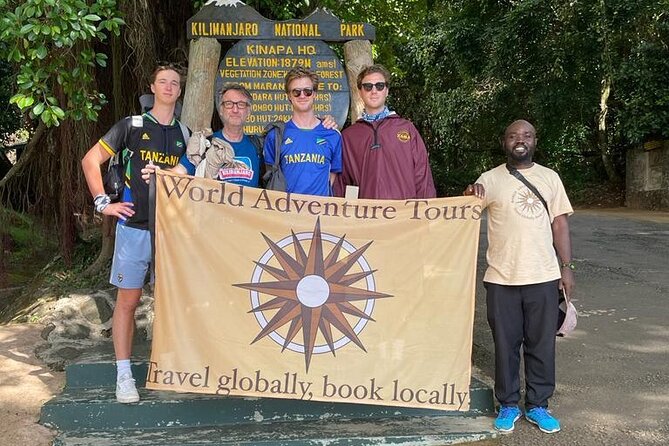
Waking early, climbers begin their summit attempt well before dawn, embarking on the challenging trek to the top of Kilimanjaro.
The route to the summit is steep and demanding, with the thin air making each step more difficult.
Reaching Gilman’s Point at the rim of the crater, climbers take a much-needed break before pushing on to Uhuru Peak, the highest point in Africa.
The final ascent is grueling, but the sense of accomplishment upon reaching the summit is unparalleled.
Climbers have the opportunity to take in the breathtaking views and snap photos before beginning the descent back down the mountain, their Kilimanjaro challenge successfully completed.
Descending the Mountain
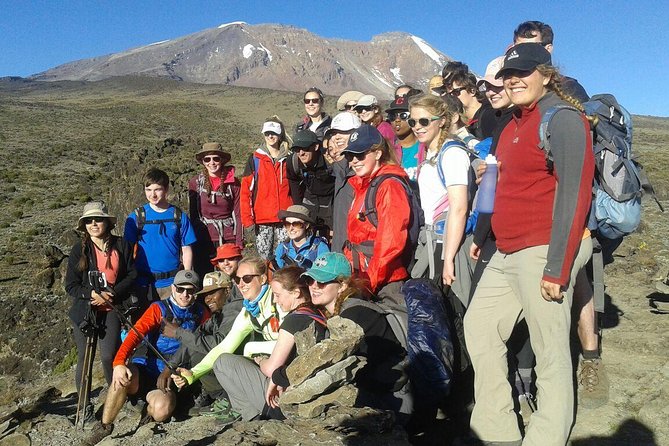
Having conquered the summit of Kilimanjaro, climbers now face the challenging descent back down the mountain. The descent can be just as arduous as the ascent, requiring careful planning and proper technique.
The key points to remember are:
- Pace yourself – Descending quickly can put strain on the knees and joints.
- Use trekking poles – They provide stability and reduce impact on the joints.
- Stay hydrated and refuel – Replenish fluids and calories to maintain energy levels.
The descent along the Marangu Route typically takes two days. Hikers will retrace their steps, passing through the same camps before reaching the park gate.
With proper precautions, the descent can be a smooth and satisfying end to the Kilimanjaro adventure.
Post-Climb Arrangements
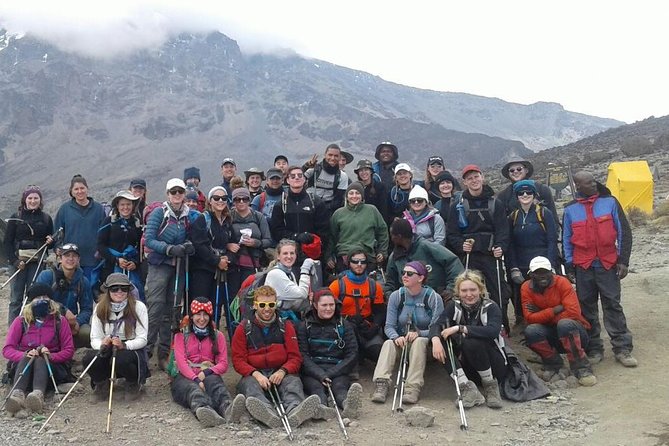
Once climbers have safely descended Kilimanjaro, they’ll need to take care of a few post-climb arrangements.
First, they’ll return to the Springlands Hotel in Moshi, where they started their journey. Here, they can rest, reflect on their accomplishment, and prepare for their departure.
The program includes a transfer back to Kilimanjaro International Airport, ensuring a seamless end to the trip.
Climbers should remember to tip their guides, porters, and drivers, as this is customary. Plus, they’ll need to handle any personal items or rental gear before departing.
With the hike complete, climbers can savor their achievement and begin planning their next adventure.
Frequently Asked Questions
What Is the Difficulty Level of This Kilimanjaro Climb?
The climb is considered moderately difficult, requiring a moderate level of physical fitness. Travelers with back problems, pregnant individuals, or those with heart/serious medical conditions are not recommended to undertake this hike.
Can I Bring My Own Climbing Gear?
You can bring your own climbing gear, but it’s not required. The tour provides qualified guides, mountain crew, and necessary equipment. Make sure any personal gear meets safety standards to ensure a successful and enjoyable climb.
How Many Porters Are Typically Assigned per Group?
The number of porters assigned per group typically varies based on the size of the group. Most tour operators assign 1 porter per 2 travelers to carry the group’s gear and supplies up the mountain.
Is It Possible to Extend the Program Duration?
Yes, the program duration can be extended. Clients can customize their Kilimanjaro trek by adding extra days on the mountain or including additional activities before or after the climb. This allows for more acclimatization and exploration.
What Is the Refund Policy in Case of Cancellation?
The program has a non-refundable policy. Participants can’t receive a refund if they cancel the booking. Refunds may be available in specific circumstances, but the provider doesn’t guarantee any refunds for cancellations.
The Sum Up
The Kilimanjaro Marangu Route 8-Day Program offers a fulfilling adventure for those seeking to conquer Africa’s highest peak. This gradual ascent allows trekkers to build endurance and acclimatize, culminating in a challenging summit attempt. Climbers will revel in the breathtaking landscapes and camaraderie of fellow adventurers, before enjoying well-deserved rest after their remarkable achievement.
More Tour Reviews in Arusha
Not for you? Here's more nearby things to do in Arusha we have reviewed
- 3days Tarangire,Ngorongoro Crater and Lake Manyara
- Tanzania Budget Camping Safaris
- Tanzanite Gemstone Mining Experience at Mererani Mines Day Tour
- 7 Days Tour Northern Tanzania Safari:
- Ngorongoro Day Trip From Arusha / Kilimanjaro
- 3 Days Tanzania Private Big 5 Safari With Midrange Lodge
- Tanzania Tours Group Sharing 3 Days 2025/2026
- From Arusha : 3 Days Private Safari Tarangire N.P and Serengeti
- Full Day Olduvai & The Enigmatic Shifting Sand Tour
- 5-Day Classic Tarangire, Serengeti & Ngorongoro Camping
- 4 Days Serengeti Splendor Adventure
- Private Multi Day Serengeti Safari
